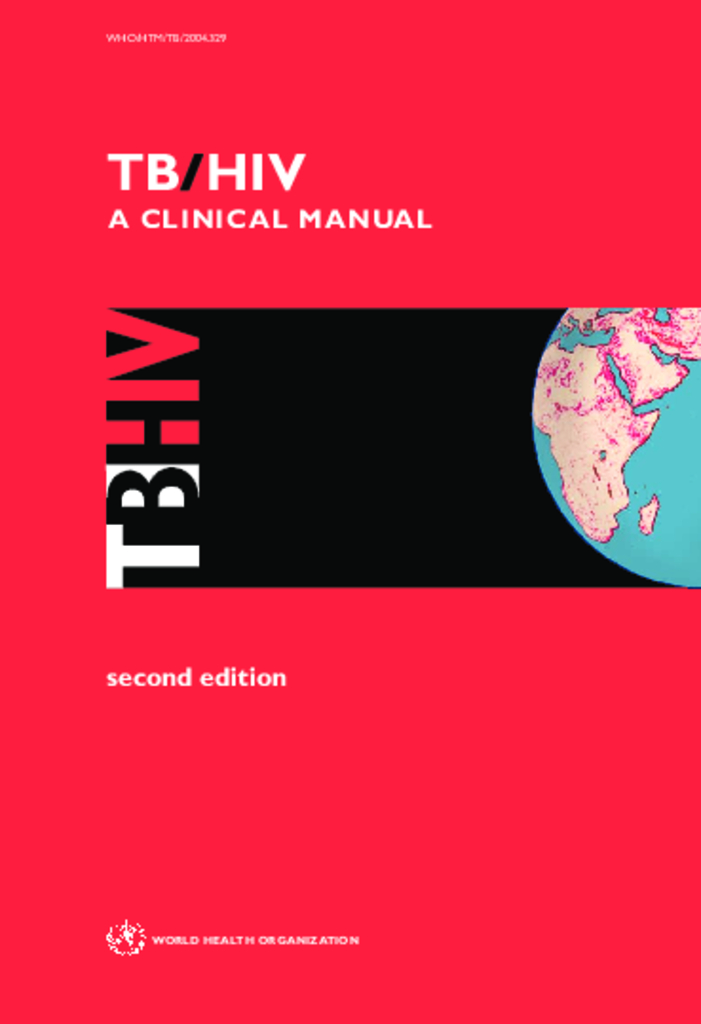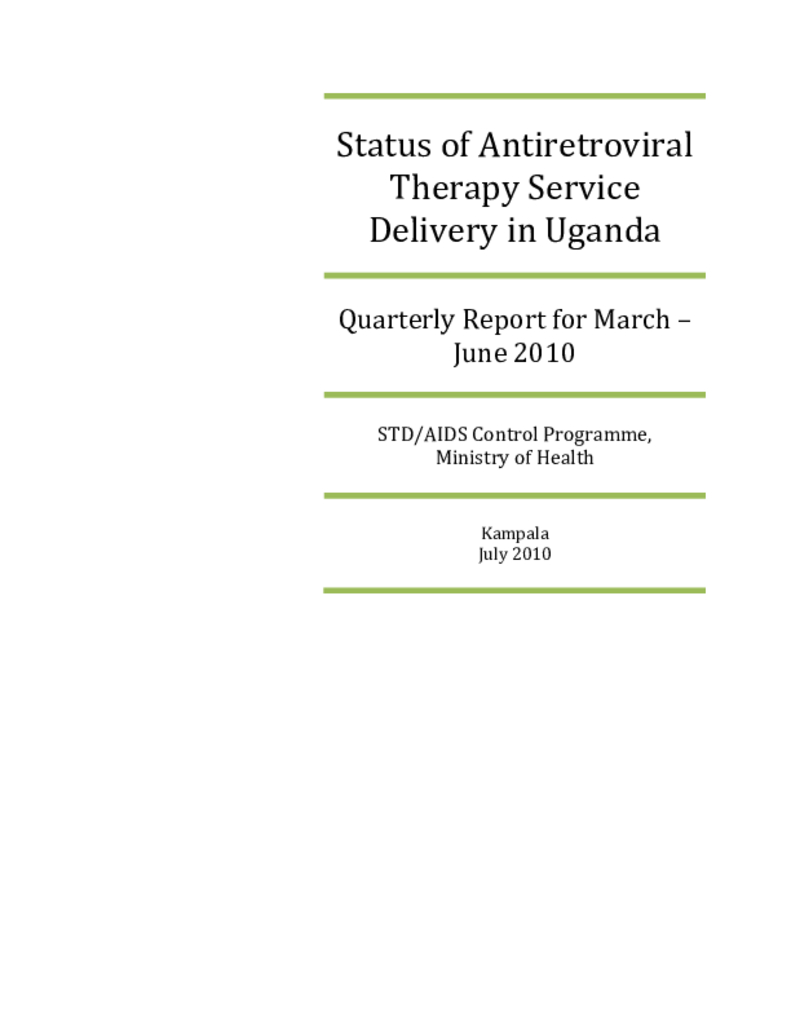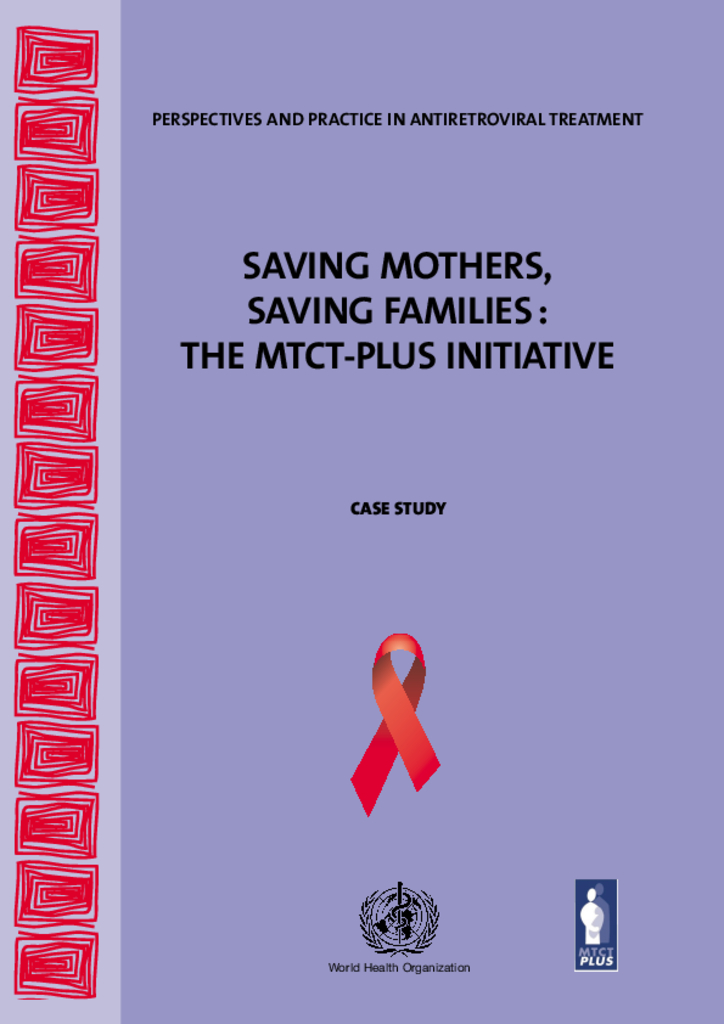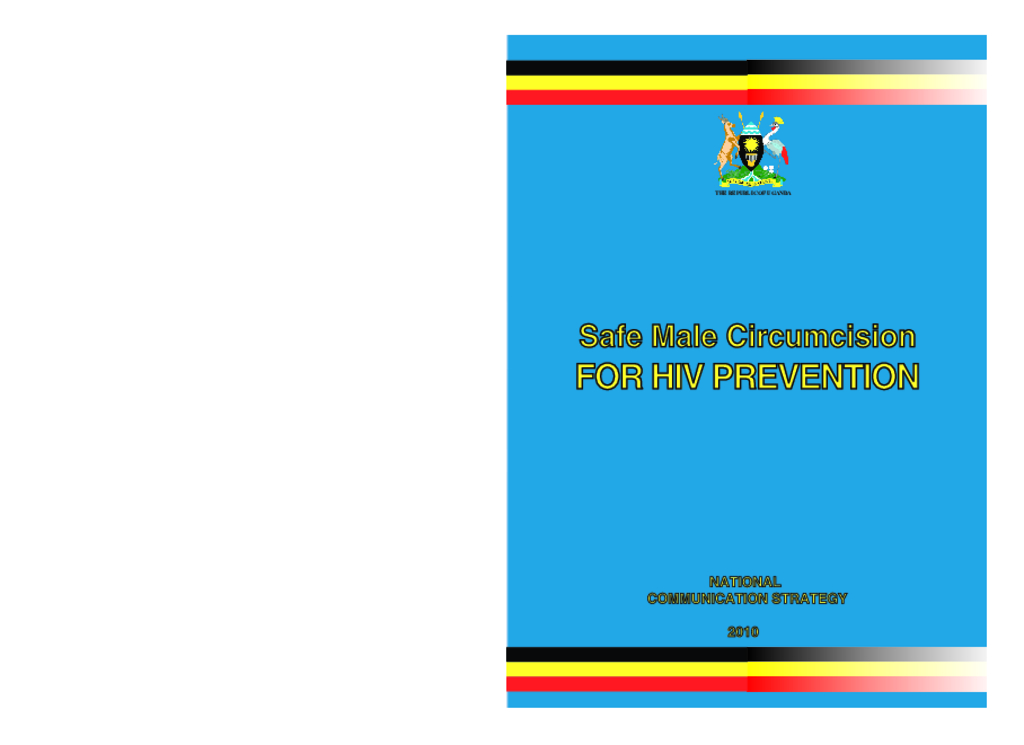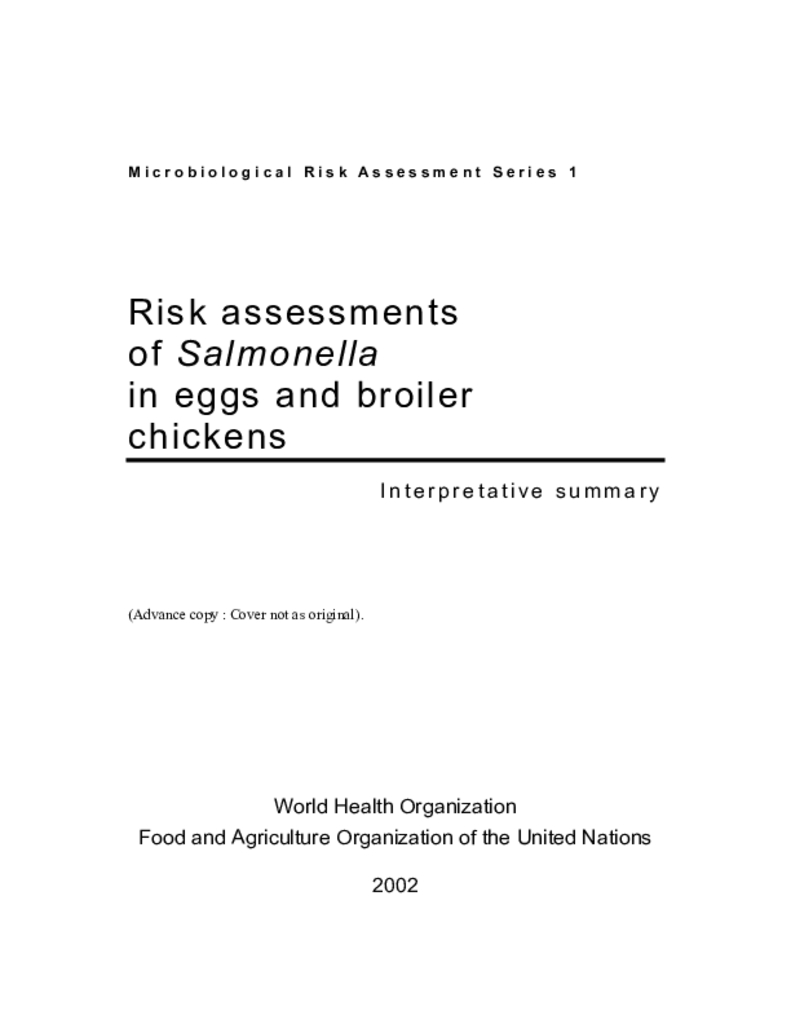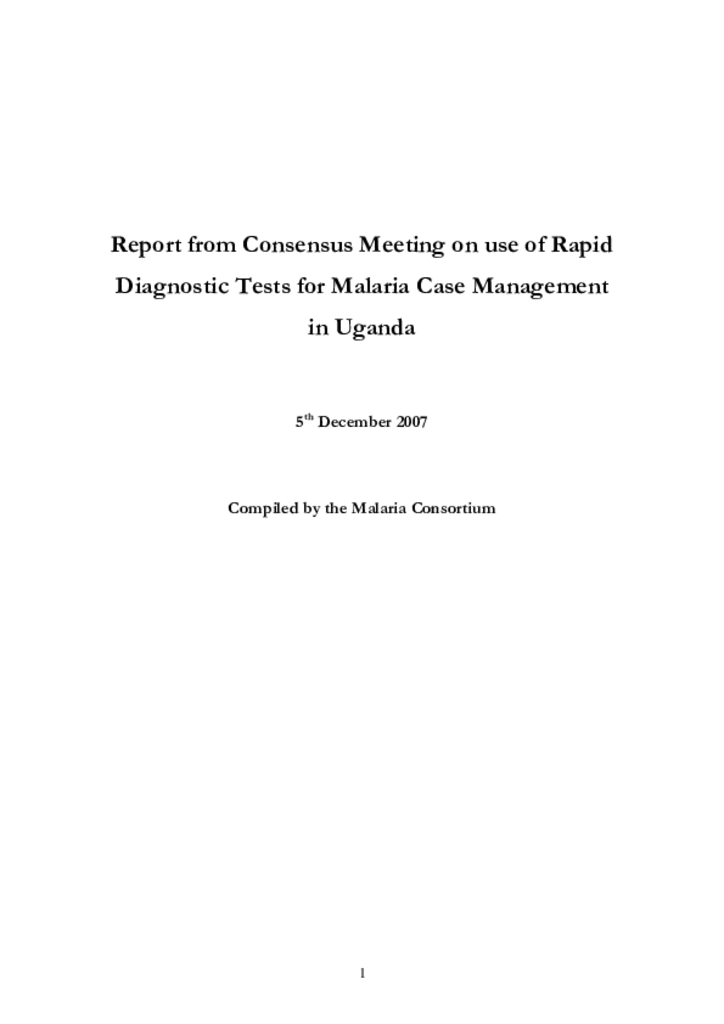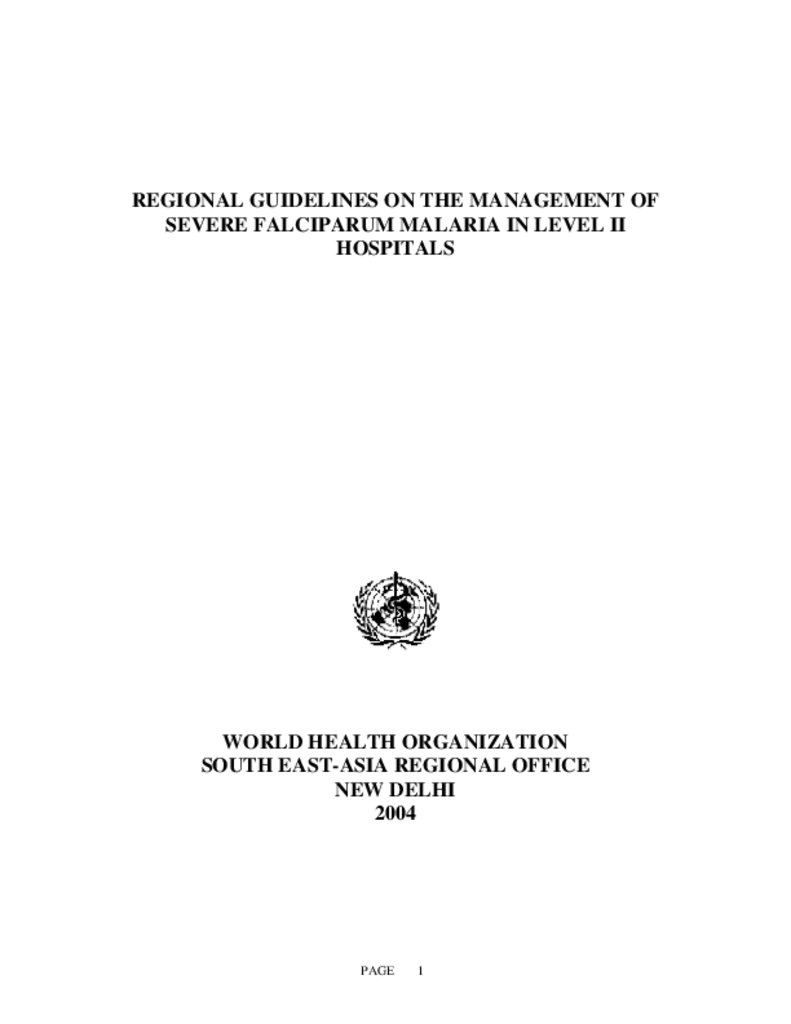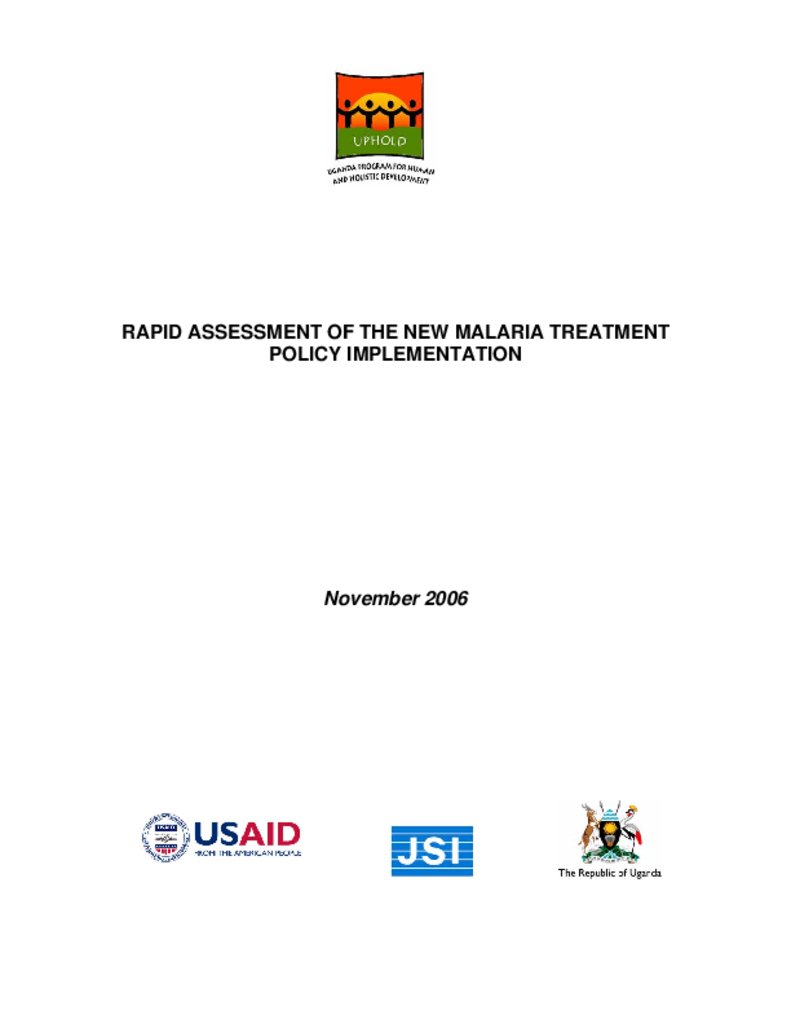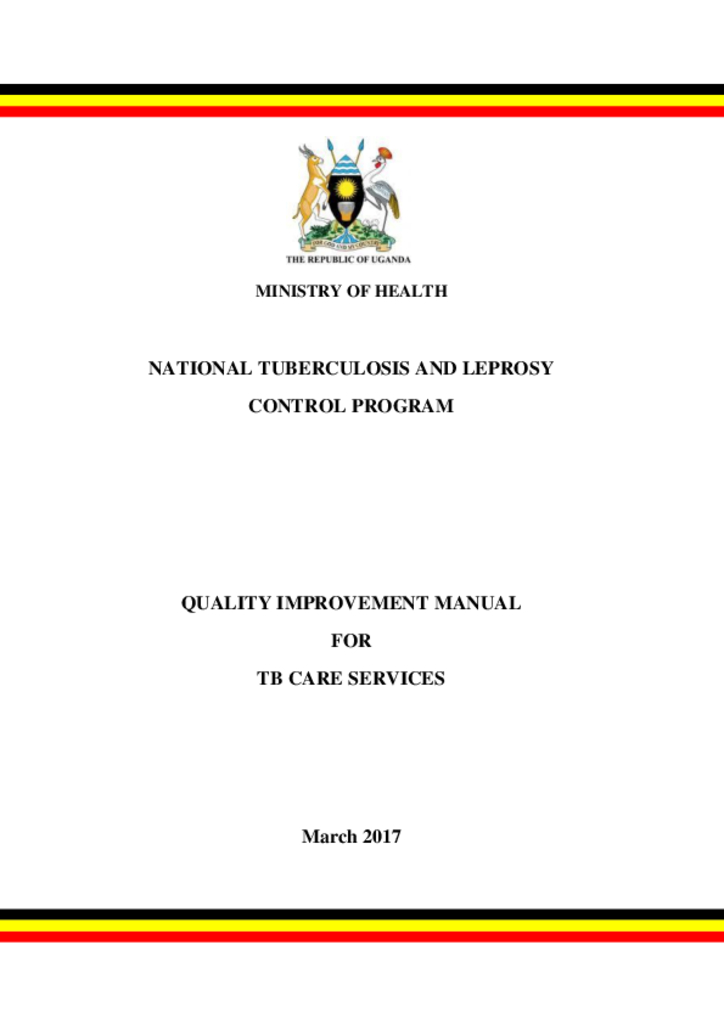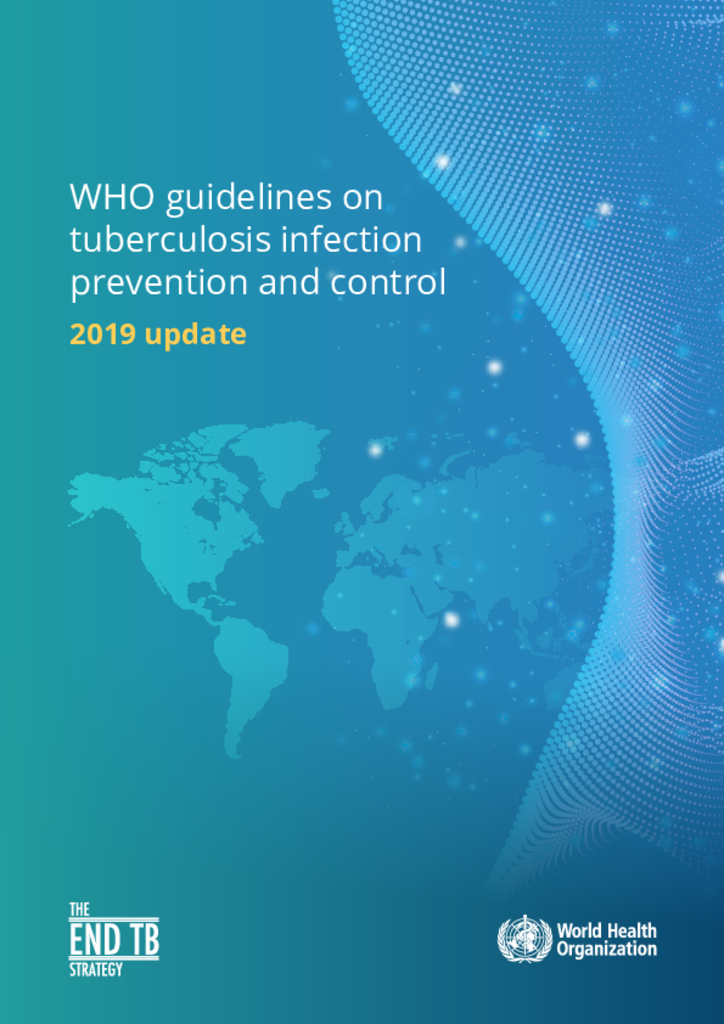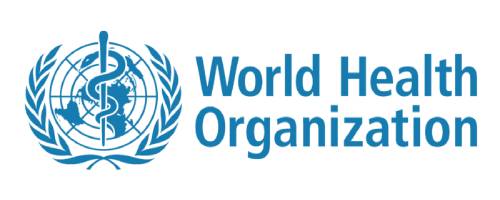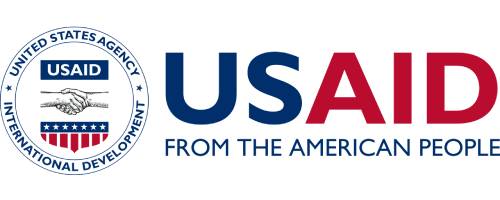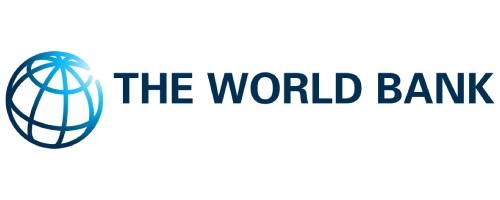Untreated HIV infection leads to progressive immunodeficiency and increased susceptibility to infections, including TB. HIV is driving the TB epidemic in many countries, especially in sub-Saharan Africa and, increasingly, in Asia and South America.TB in populations with high HIV prevalence is a leading cause of morbidity and mortality.TB programmes and HIV/AIDS programmes therefore share mutual concerns.
By end of June 2010, there were 414 accredited facilities providing ART services in the public and private sector in Uganda. The number of active ART clients had increased to 237,070 by June 2010, of whom 89 percent were adults aged over 15 years, 8 percent were children aged less than 15 years, and 3 percent had their age not specified. By end of June 2010, the cumulative number of individuals who had ever started ART in Uganda was 343,809, implying that the current enrolment is 69% of this total. During the quarter April – June 2010, 15,312 clients were enrolled onto ART country wide. Among the 89 percent (211,287) of adults clients with information on ART regimen, 97.1 percent (184,033) were on standard first-line regimens, 2.9% (5,508) on second-line regimen. Among 19,089 children with ARV regimens specified, 96 percent were on first-line regimen.
Uganda was one of the first African countries to respond aggressively to the HIV/AIDS epidemic, moving rapidly to institute measures aimed at preventing HIV transmission. HIV prevalence rates once described as being among the highest in Africa and tending toward 30% have declined to under 10 % within the last two decades. Although there is evidence of a decline in new infections, the number of people already infected and progressing to AIDS is increasing
The MTCT-Plus Initiative was conceived in 2001 as a response to the five-point Call to Action on HIV/AIDS issued by Kofi Annan, United Nations Secretary-General. Designed to increase access to HIV/AIDS care and treatment in resource-limited settings, the Initiative built on the dramatic changes that had taken place in the preceding year. Burgeoning political support for HIV/AIDS treatment following the XIII International AIDS conference in Durban, South Africa in 2000 had culminated in the United Nations General Assembly Special Session on HIV/AIDS in 2001
The Ministry of Health, in collaboration with key stakeholders, has developed this communication strategy to promote Safe Male Circumcision (SMC) in Uganda. The goal of the communication strategy is to contribute to the reduction in HIV and other Sexually Transmitted Infections incidences through increased safe male
circumcision uptake. In order to promote safe male circumcision, the communication strategy primarily focuses on creating awareness and providing the necessary information to the public and other key stakeholders on safe male circumcision as an option of HIV prevention, elaborating the broader health benefits of safe male
circumcision and advocating for support in the implementation of the SMC policy and scale-up programme.
FAO and WHO undertook a risk assessment of Salmonella in eggs and broiler chickens in response to requests for expert advice on this issue from their member countries and from the Codex Alimentarius Commission. Guidance on this issue is needed, as salmonellosis is a leading cause of foodborne illness in many countries, with eggs and poultry being important vehicles of transmission
Uganda has recently changed its malaria treatment policy to reflect the global policy of shifting from non-artemisinin-based combination therapies. In 2004, the first line treatment for uncomplicated malaria, chloroquine+SP, was replaced with artemether/lumefantrine. Implementation of this new drug policy, commenced in 2005 with health facility deployment of artemether/lumefantrine as a brand called Coartem®.
As part of the change in policy the Ministry of Health proposed to increase the emphasis on parasitological diagnosis by introducing malaria rapid diagnostic tests (RDTs). The National Malaria Control Programme (NMCP) drafted policy guidelines in consultation with stakeholders. To enrich the guidelines on RDT use in Uganda, this meeting was organised to gather consensus on policy recommendations based on local experiences and ongoing research by UMSP, WHO and the Malaria Consortium. It follows a larger meeting organised in February 2007.
Malaria is the major cause of mortality and morbidity in the tropical and subtropical regions in the world. An estimated 300-500 million persons suffer from malaria every year and more than 1million die each year. Majority of these cases and deaths particularly those in children occur in Sub Saharan Africa. Unlike some of the other acute diseases such as encephalitis, meningitis, and most of the chronic diseases, patients of severe malaria can recover completely without any long term effects if treated promptly and correctly.
The 2014 Ebola outbreak, which has affected several countries in West Africa, is the largest in history. The three countries most affected by the outbreak – Guinea, Liberia and Sierra Leone –have reported almost 25,000 cases as of March 2015. In response to the urgent need for Ebola treatment beds, several facilities were reconfigured to admit, isolate, and treat patients. Many such facilities were constructed in existing hospitals, schools or buildings that provided other functions prior to the outbreak. New facilities were also constructed to deal with the epidemic
The burden of disease due to malaria in Uganda is unacceptably high and the resistance of the malaria parasites to Chloroquine (CQ) and Sulfadoxine/Pyrimethamine (SP) has aggravated the situation. Because of this, in May 2004, the Ministry of Health decided to change the malaria treatment policy from CQ+SP combination to the more effective artemisinin based combination therapy (ACT).
Tuberculosis (TB) remains a disease of great public health concern in Uganda. The country is one of the 30 high TB/HIV burden countries in the world. The prevalence of TB estimated in the recently concluded National TB prevalence survey is almost two times higher than had previously been estimated (253 compared to 161 per 100,000 population)
Worldwide, tuberculosis (TB) continues to be the most important cause of death from a single infectious microorganism.1 Although recent decades have witnessed increased efforts in the fight to end TB, fundamental gaps are hampering these efforts, particularly in resource-constrained settings and in settings with a high burden of disease
